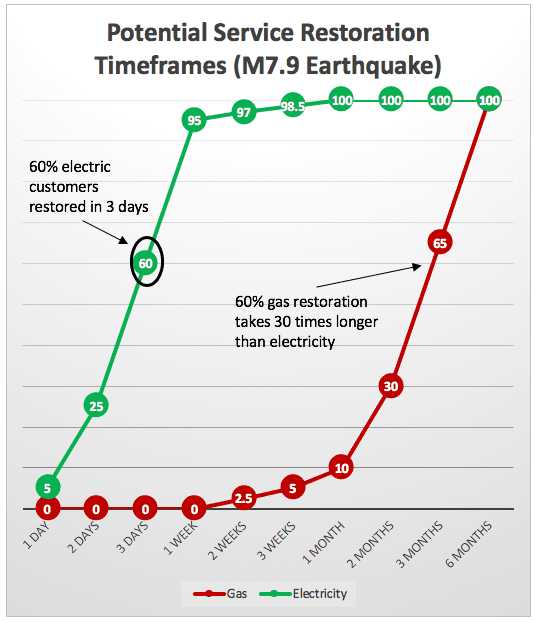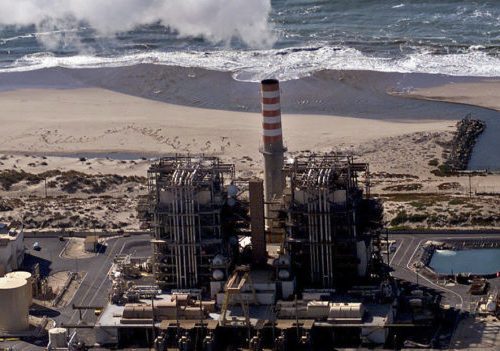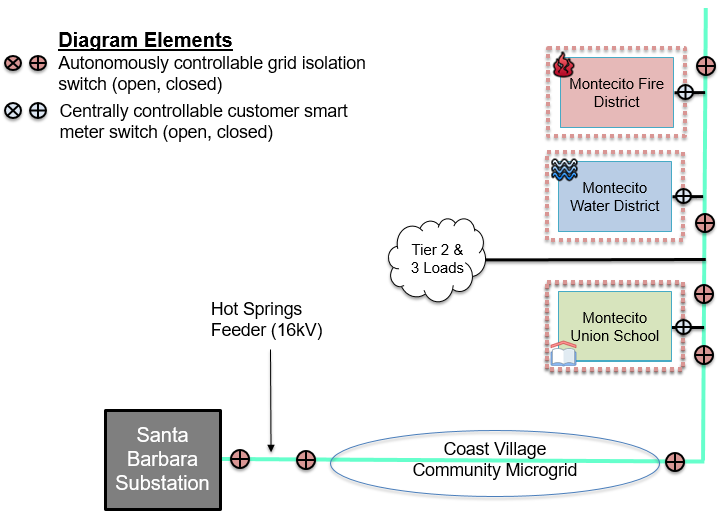Why Fire-Prone Communities Need Community Microgrids Now
This blog post explains the crucial need for Community Microgrids in fire-prone regions.
Read More
Can Community Microgrids powered by solar+storage replace gas peaker plants? Analyses from 2017 show that the answer is yes, and solar+storage costs have only come down since then.
A 2019 report from the Rocky Mountain Institute (RMI) concluded that clean energy portfolios made up of solar, wind, and energy storage are a better investment than both new and existing natural gas plants — even without factoring in costs related to resilience, flexible demand response, and potential carbon pricing.
This is not hypothetical; in 2019, the Los Angeles Department of Power and Water (LADWP) entered into a contract for a 400 megawatt (MW) solar+storage project with a price for solar of 1.997¢/kWh — half the estimated cost of power from a new natural gas plant — and battery power for just 1.3¢/kWh.
In 2020, Southern California Edison (SCE) announced announced it would buy 770 MW of cost-effective energy storage, most of it co-located with solar farms. The energy storage will help SCE replace four gas power plants along the Southern California coast.
Solar+storage facilities can be deployed more quickly than gas plants, at a significantly lower price. The LADWP solar+storage plant, the largest in the world, is expected to be operational by April 2023. The SCE project aims to be deployed at record-fast speed, by August 2021.
Solar+storage Community Microgrids are technically and economically superior to new gas plants. Community Microgrids also provide other advantages, delivering an unparalleled trifecta of economic, environmental, and resilience benefits.
Our power system relies on gas peaker plants to meet infrequent peaks in electricity demand. These peaker plants, which sit idle much of the time when they are not needed, are more expensive and inefficient to run than even baseload gas plants, per every megawatt-hour (MWh) generated. Peaker gas plants are also polluters — with higher capital costs, plus far higher operations and maintenance costs, than renewable energy. In addition, peaker plants are disproportionately located in disadvantaged communities, making already vulnerable populations even more vulnerable to health and environmental hazards.
Furthermore, gas lines are just as susceptible as power lines to ground disruptions from earthquakes and other disasters — and restoration of service for gas lines after earthquakes takes 30 times longer than restoration for electricity:

See the Clean Coalition’s presentation showing how Community Microgrids beat gas peakers in every way

In 2017, the Clean Coalition released a study showing that solar+storage would be cheaper than two proposed gas plant projects in California: the Puente Power Project and the Ellwood Peaker Plant. The projects are both part of the Moorpark Subarea, which includes the cities of Oxnard, Santa Barbara, and Goleta.
The Clean Coalition’s models of realistic alternatives to the Puente and Ellwood plants show that a Community Microgrid powered by solar+storage could be installed for $267 million, compared to $299 million for the Puente proposal. Without even accounting for operations, maintenance, and fuel — which would increase gas plant project costs dramatically — a Community Microgrid powered by solar+storage could replace both Puente and Ellwood for approximately $406 million.

With a well-designed feed-in tariff (FIT), solar+storage solutions can be deployed more quickly than gas peaker plants.
The Clean Coalition has designed a game-changing FIT that includes Market Responsive Pricing to ensure the best value for ratepayers, along with a Dispatchability Adder to incentivize energy storage. This innovative FIT can procure and deploy cost-effective renewables and energy storage much more quickly than auction processes, which are burdened by excessive preparation requirements, transaction costs, and failure rates. A FIT approach is far faster than building a gas plant.
Sacramento Municipal Utility District (SMUD) has already shown this can be done with its FIT launched in 2010 to develop 100 MW of distributed solar. Within two years, over 98% of the 100 MW of FIT program capacity was successfully constructed and online.
Cost-effective solar+storage solutions are already in place, and more are on the way.
Tesla’s 17 MW solar + 52 MWh storage facility on Kauai stores solar energy during the day to use at night, making solar dispatchable when it is needed rather than only when the sun is shining. AES’ 28-MW solar + 100 MWh storage facility, also on Kauai, will provide 11% of the island’s electricity needs, at 11¢/kWh for dispatchable solar. And LADWP’s planned 400 MW solar+storage project will have a price for solar of 1.997¢/kWh and battery power for just 1.3¢/kWh.
The Clean Coalition is working on a number of Community Microgrid projects powered by solar+storage, including an initiative to provide resilience to an area of Santa Barbara County, California that experienced a devastating wildfire and debris flow.

The latest in clean local energy
Learn about our innovative projects and initiatives on our blog, and see what others are reporting about our important work.
This blog post explains the crucial need for Community Microgrids in fire-prone regions.
Read MoreRedwood Energy reports on Clean Coalition’s expert commentary, warning that AB 942 threatens rooftop solar affordability and undermines the clean‑energy transition
Read articleThis Clean Coalition hosted webinar took place on 27 June 2025 at 10:00 AM PST.
Read More